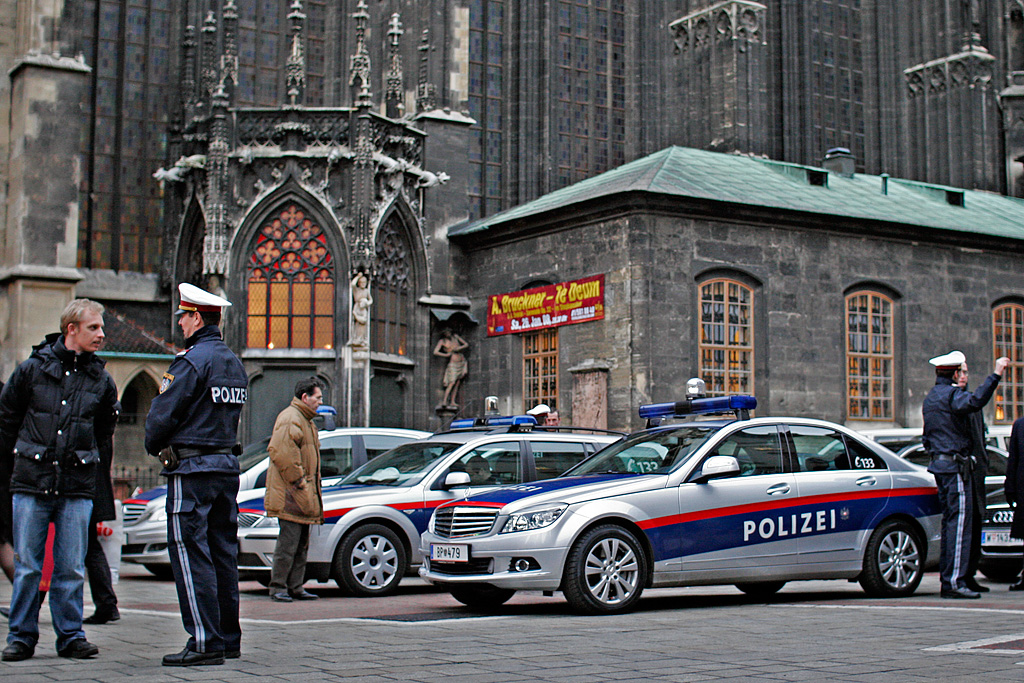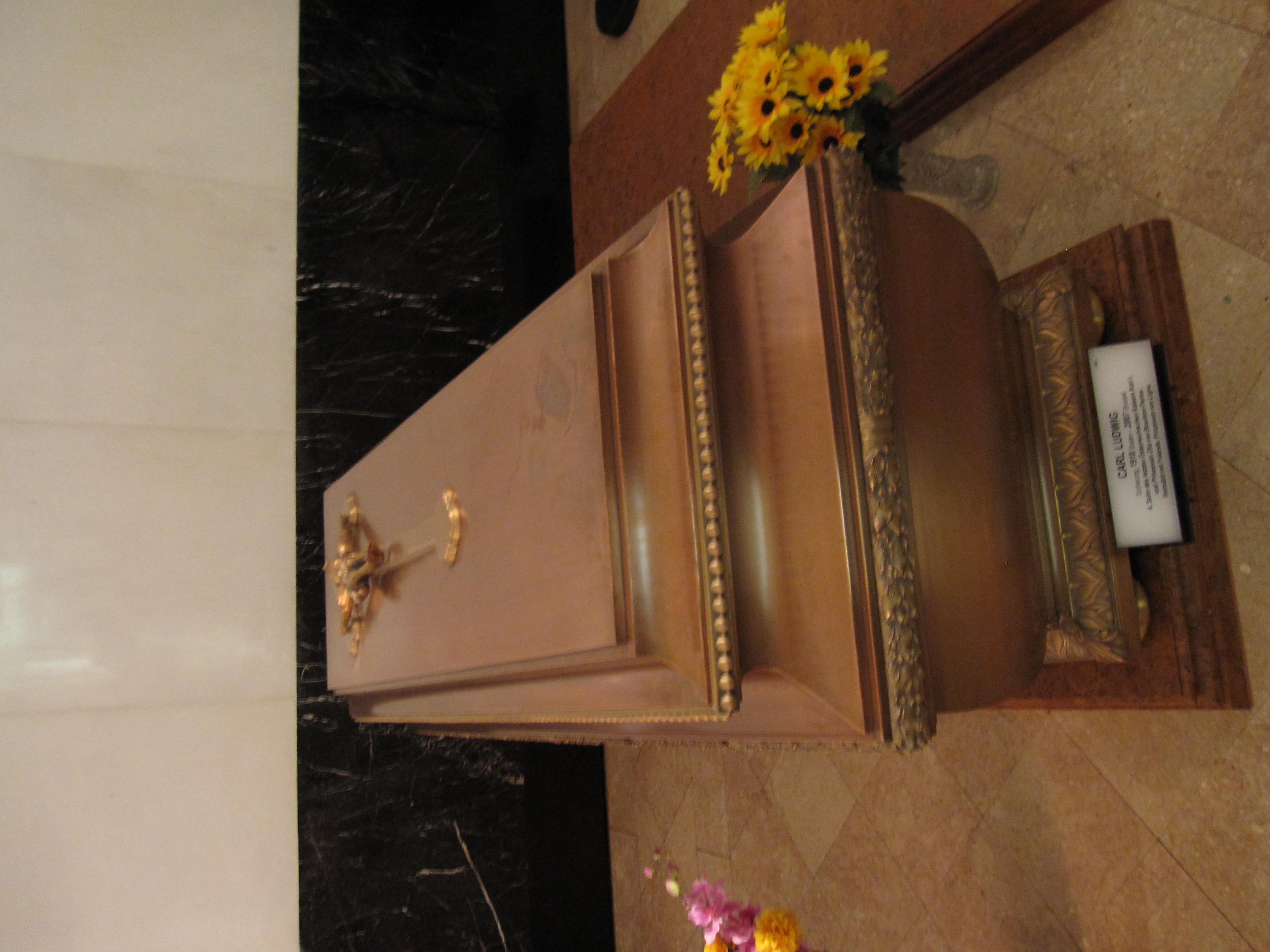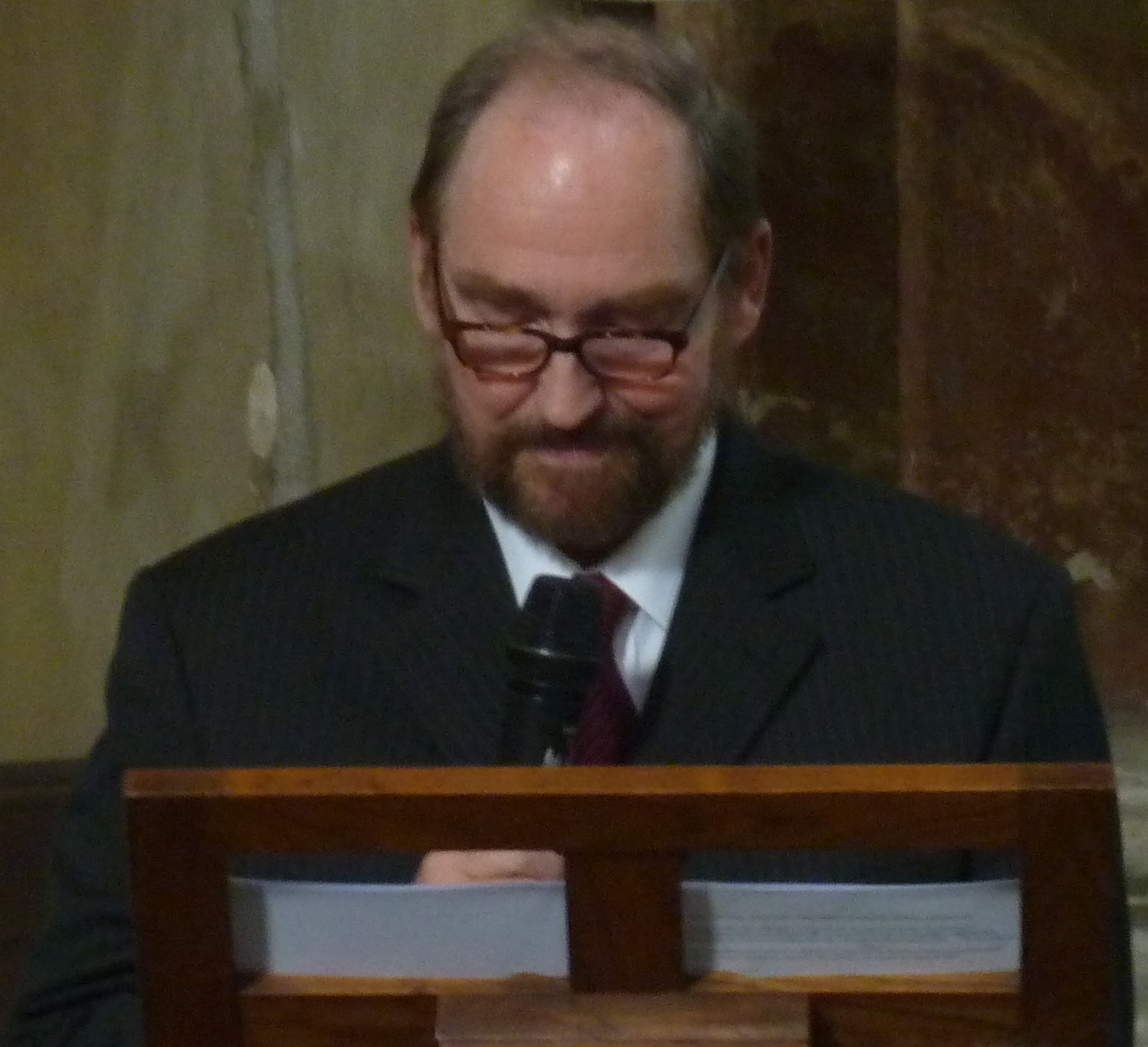1. Life
Carl Ludwig's life was marked by his imperial lineage, a period of exile, military service during a pivotal global conflict, a successful business career, and notable philanthropic endeavors.
1.1. Early Life and Education
Carl Ludwig was born in Baden bei Wien on March 10, 1918, a mere six months before the collapse of the Austro-Hungarian Empire. His birth was heralded by a 101-gun salute, signifying his imperial status. His early childhood was spent in exile following the end of World War I and the abolition of the monarchy. The imperial family first sought refuge in Switzerland, then moved to Madeira, Portugal, where his father, Emperor Charles I, passed away.
During the 1930s, with the support of his elder brother and head of the house, Otto von Habsburg, Carl Ludwig studied at the University of Louvain in Belgium. In 1940, as Nazi Germany invaded, his family evacuated to North America, settling in Quebec City, Canada. It was during his time in North America that he changed the spelling of his first name from the German KarlKarlGerman to "Carl." In Quebec, he continued his studies at Université Laval, graduating with degrees in Law, Political Science, and Social Sciences.
1.2. World War II Service
During World War II, Carl Ludwig demonstrated a commitment to democratic values and human rights. He actively helped Jewish refugees escaping Adolf Hitler's regime in Germany, providing assistance to those in dire need. In 1943, at the invitation of Franklin D. Roosevelt, the President of the United States, he joined the United States Army.
Carl Ludwig and his brother, Felix, volunteered to serve in the 101st Infantry Battalion of the U.S. Army, famously known as the "Free Austria Battalion." However, the battalion was eventually disbanded when a significant number of exiled Jewish volunteers, who constituted the majority of the force, ultimately decided not to confirm their enlistment. Despite this setback, Carl Ludwig's service continued. In 1944, he participated in the Normandy landings in France, a crucial turning point in the war. He also undertook secret peace negotiations in neutral Portugal with Hungary on behalf of President Roosevelt, though these efforts ultimately did not succeed. He remained in the U.S. Army until 1947, achieving the rank of Major.
1.3. Post-War Career and Philanthropic Activities
Following his military service, Carl Ludwig embarked on a career in business. He joined the American branches of Belgian companies, working in New York City and Washington, D.C.. In 1958, he returned to Europe with his family and settled in Brussels, Belgium, where he worked for Société Générale de Belgique.
Carl Ludwig's most notable business achievement was the founding of Genstar, the Canadian subsidiary of Société Générale de Belgique. He served as a director of Genstar until his retirement in 1986. Under his leadership, Genstar expanded significantly, creating various departments and increasing its workforce to over 2,000 employees. Beyond his corporate success, Carl Ludwig was deeply involved in social and philanthropic work. Along with Archduchess Marie Astrid of Austria, his sister-in-law, he actively engaged in social initiatives in Belgium, dedicating efforts to assist the needy and the unemployed.
1.4. Relationship with Austria
Carl Ludwig's relationship with his ancestral home, Austria, was complicated by the Habsburg Law of 1919, which had abolished the monarchy and confiscated Habsburg assets. Unlike his elder brother, Otto von Habsburg, Carl Ludwig initially refused to renounce his claims to the throne or his status as a member of the Habsburg family in exchange for Austrian citizenship. This stance led to him being barred from entering Austria by the Austrian government.
He, along with his brother Felix, actively sought the return of a portion of the confiscated Habsburg assets. These assets had been temporarily returned to the Habsburg family through a reconciliation with the Republic of Austria between 1935 and 1936, but were re-confiscated by the Nazi Party government during the Anschluss in 1938 and had not been returned since.
A significant breakthrough occurred on March 26, 1996, when Carl Ludwig and Felix made a declaration of loyalty to the Republic of Austria. This declaration did not explicitly mention renouncing their claims to the throne, representing a concession from the Austrian government. On April 16, 1996, the Austrian Parliament unanimously approved the issuance of passports and entry permits to the brothers, finally allowing Carl Ludwig to return to his homeland.
2. Marriage and Issue
On January 17, 1950, Carl Ludwig married Princess Yolande de Ligne (born May 6, 1923, died September 13, 2023), the daughter of Eugène, 11th Prince of Ligne, and Philippine de Noailles, in Belœil, Belgium. The couple had four children:
- Archduke Rudolf of Austria (Rudolf Maria Carl Eugen Anna Antonius Marcus d'Aviano, born November 17, 1950): He married Baroness Hélène de Villenfagne de Vogelsanck (born April 24, 1954) in Brussels on July 3, 1976. After their marriage, the family took up residence in Belgium. On May 29, 1978, he, his children, and male-line descendants were incorporated into the Belgian nobility by royal letters patent, receiving the hereditary title of Prince/sse de Habsbourg-Lorraine and the style of Serene Highness. Rudolf works at the investment management firm AAA Gestion, based in Villars-sur-Glâne, Switzerland, and resides at De Diesbach Castle. Rudolf and Hélène have eight children, who were later recognized by the Head of the Imperial House of Austria as Archdukes and Archduchesses of Austria:
- Archduke Carl Christian of Austria (born 1977), married Estelle de Saint-Romain (born 1979) on June 2, 2007.
- Archduchess Priscilla of Austria (born 1979), engaged in 2022 to Gabriel Contreras Millán.
- Archduke Johannes of Austria (born 1981), a Catholic priest of the Swiss Fraternity Eucharistein.
- Archduke Thomas of Austria (born 1983), a member of the Swiss Catholic Fraternity Eucharistein.
- Archduchess Marie-des-Neiges of Austria (born 1986), a member of the Swiss Catholic Fraternity Eucharistein.
- Archduke Franz-Ludwig of Austria (born 1988), married Mathilde Vignon (born 1992) in 2018.
- Archduke Michael of Austria (born 1990).
- Archduke Joseph of Austria (born 1991), a member of the Swiss Catholic Fraternity Eucharistein.
Archduke Rudolf of Austria, son of Carl Ludwig, during a presentation about his grandmother Zita of Bourbon-Parma in Brno (2014) - Archduchess Alexandra of Austria (Alexandra Maria Anna Philippa Othonia, born July 10, 1952): She married Héctor Riesle Contreras (born February 16, 1943), the Chilean ambassador to the Holy See. They had three children:
- Felipe Riesle de Habsburgo-Lorena (born 1986), married Pilar García-Huidobro Echeverría.
- María Sofía Riesle de Habsburgo-Lorena (born 1987), married Rodrigo Risopatrón Montero.
- Constanza Riesle de Habsburgo-Lorena (born 1989), married Sebastián Prieto Donoso.
- Archduke Carl Christian of Austria (Carl Christian Maria Anna Rudolph Anton, born August 26, 1954): He married Princess Marie Astrid of Luxembourg on February 6, 1982. Like his older brother Rudolf, he works at the investment management firm AAA Gestion, based in Villars-sur-Glâne, Switzerland. Carl Christian and Marie Astrid have five children:
- Archduchess Marie-Christine Anne Astrid Zita Charlotte of Austria (born July 31, 1983, Brussels, Belgium). She married Count Rodolphe de Limburg-Stirum (born March 20, 1979, Uccle, Brussels, Belgium) in a civil ceremony on December 6, 2008, in Mechelen, Belgium, followed by a religious ceremony at St. Rumbold's Cathedral in Mechelen. They have three sons:
- Count Léopold Menno Philippe Gabriel François-Xavier Marie Joseph Ghislain de Limburg-Stirum (born April 19, 2011, Buenos Aires, Argentina).
- Count Constantin de Limburg-Stirum (born October 25, 2013, Buenos Aires, Argentina).
- Count Gabriel de Limburg-Stirum (born 2016).
- Archduke Imre Emanuel Simeon Jean Carl Marcus d'Aviano of Austria (born December 8, 1985, Geneva, Switzerland). He married Kathleen Elizabeth Walker (born April 17, 1986, Cincinnati, Ohio, US) on December 8, 2012, at Saint Mary, Mother of God Catholic Church in Washington, D.C.. They have five children:
- Archduchess Maria-Stella Elizabeth Christiana Yolande Alberta of Austria (born November 11, 2013, Kirchberg, Luxembourg).
- Archduchess Magdalena Maria Alexandra Zita Charlotte of Austria (born February 24, 2016, Kirchberg, Luxembourg).
- Archduchess Juliana Marie Christine Wilhelmina Margaret Astrid of Austria (born October 14, 2018, Geneva, Switzerland).
- Archduchess Cecilia Marie Josephine Adelaide Henrietta of Austria (born January 15, 2021, Geneva, Switzerland).
- Archduke Karl of Austria (born June 4, 2023, Geneva, Switzerland).
- Archduke Christoph Henri Alexander Maria Marcus d'Aviano of Austria (born February 2, 1988, Geneva, Switzerland). He married Adélaïde Marie Béatrice Drapé-Frisch (born September 4, 1989, Les Lilas, Paris, France) on December 29, 2012, at the Basilica of Saint-Epvre in Nancy, France. They have four children:
- Archduchess Katarina Marie-Christine Fabiola of Austria (born December 22, 2014, Geneva, Switzerland).
- Archduchess Sophia of Austria (born August 31, 2017, Geneva, Switzerland).
- Archduke Josef of Austria (born October 2020, Geneva, Switzerland).
- Archduchess Flavia of Austria (born 2023).
- Archduke Alexander Hector Marie Karl Leopold Marcus d'Aviano of Austria (born September 26, 1990, Meyrin, Switzerland). He married Natacha Roumiantzeff-Pachkevitch on September 30, 2023, at Belœil, Belgium.
- Archduchess Gabriella Maria Pilar Yolande Joséphine-Charlotte of Austria (born March 26, 1994, Geneva, Switzerland). She married Prince Henri Luitpold Antoine Victor Marie Joseph of Bourbon-Parma (born October 14, 1991, Roskilde, Denmark) on September 12, 2020, at Tratzberg Castle, Jenbach, Tyrol, Austria. They have three daughters:
- Princess Victoria Antonia Marie-Astrid Lydia of Bourbon-Parma (born October 30, 2017, Geneva, Switzerland).
- Princess Anastasia Erika Alexandra Marie Yolande of Bourbon-Parma (born July 3, 2021, Geneva, Switzerland).
- Princess Philippina of Bourbon-Parma (born 2023).
- Archduchess Maria Constanza of Austria (Maria Constanza Anna Rosario Roberta, born October 19, 1957): She married Franz Josef, Prince (Fürst) von Auersperg-Trautson (born December 11, 1954), in Belœil, Belgium, on June 18, 1994. They have three biological daughters (one died shortly after birth) and one adopted daughter, who bear the family name Prinzessin von Auersperg-Trautson and the courtesy title of Princess of Auersperg-Trautson:
- Princess Anna Maria of Auersperg-Trautson (born September 24, 1997).
- Princess Alexandra Maria of Auersperg-Trautson (born and died February 9, 1998).
- Princess Ladislaya of Auersperg-Trautson (born February 26, 1999).
- Princess Eleonora of Auersperg-Trautson (born May 28, 2002).
- Archduchess Marie-Christine Anne Astrid Zita Charlotte of Austria (born July 31, 1983, Brussels, Belgium). She married Count Rodolphe de Limburg-Stirum (born March 20, 1979, Uccle, Brussels, Belgium) in a civil ceremony on December 6, 2008, in Mechelen, Belgium, followed by a religious ceremony at St. Rumbold's Cathedral in Mechelen. They have three sons:
3. Death
Archduke Carl Ludwig of Austria died on December 11, 2007, at the age of 89, in Brussels, Belgium. His funeral was held in Vienna, Austria, on January 12, 2008. The ceremony saw the participation of members of the Austrian-Hungarian Royal Family, the Grand Ducal Family of Luxembourg, and the Belgian Royal Family. The Austrian government was also involved in the funeral proceedings, with Austrian Police being mobilized for the event.


Carl Ludwig was laid to rest beside his mother, Empress Zita, in the Kapuziner Crypt in Vienna, the traditional burial place for members of the Habsburg imperial family.
4. Ancestry
| Relationship | Name |
|---|---|
| 1. Archduke Carl Ludwig of Austria | |
| 2. Father | Charles I of Austria |
| 3. Mother | Princess Zita of Bourbon-Parma |
| 4. Paternal Grandfather | Archduke Otto Franz of Austria |
| 5. Paternal Grandmother | Princess Maria Josepha of Saxony |
| 6. Maternal Grandfather | Robert I, Duke of Parma |
| 7. Maternal Grandmother | Infanta Maria Antónia of Portugal |
| 8. Paternal Great-Grandfather | Archduke Karl Ludwig of Austria |
| 9. Paternal Great-Grandmother | Princess Maria Annunziata of Bourbon-Two Sicilies |
| 10. Paternal Great-Grandfather | George of Saxony |
| 11. Paternal Great-Grandmother | Infanta Maria Ana of Portugal |
| 12. Maternal Great-Grandfather | Charles III, Duke of Parma |
| 13. Maternal Great-Grandmother | Princess Louise of Artois |
| 14. Maternal Great-Grandfather | Miguel I of Portugal |
| 15. Maternal Great-Grandmother | Princess Adelaide of Löwenstein |
5. Assessment and Legacy
Archduke Carl Ludwig of Austria led a life that spanned significant historical transformations, from the collapse of empires to the rise of modern global industries. His legacy is multifaceted, encompassing his entrepreneurial achievements, his complex relationship with his ancestral homeland, and his notable contributions to society and human welfare.
His business career, particularly his role in founding and leading Genstar, demonstrated his acumen as an entrepreneur. Under his guidance, the company experienced substantial growth, showcasing his ability to adapt and thrive in the post-war global economy.
Beyond his commercial success, Carl Ludwig's actions during and after World War II reflect a strong commitment to human rights and social progress. His active assistance to Jewish refugees fleeing Nazi Germany stands as a testament to his humanitarian principles in a time of extreme crisis. Furthermore, his dedicated philanthropic work in Belgium, providing aid to the needy and unemployed, underscored a lifelong commitment to social welfare. These efforts contrast sharply with the traditional aristocratic roles often associated with his lineage, positioning him as a figure who used his position for broader societal benefit.
His prolonged dispute with the Austrian government over the Habsburg Law and the return of family assets highlights the challenges faced by former ruling families in a republican era. His eventual reconciliation, allowing him to return to Austria without fully renouncing his heritage, represented a pragmatic resolution that balanced historical claims with modern political realities. Carl Ludwig successfully navigated his identity as both a descendant of an imperial dynasty and a contributing member of modern European society, leaving a legacy defined by both his heritage and his active contributions to human welfare and economic development.
